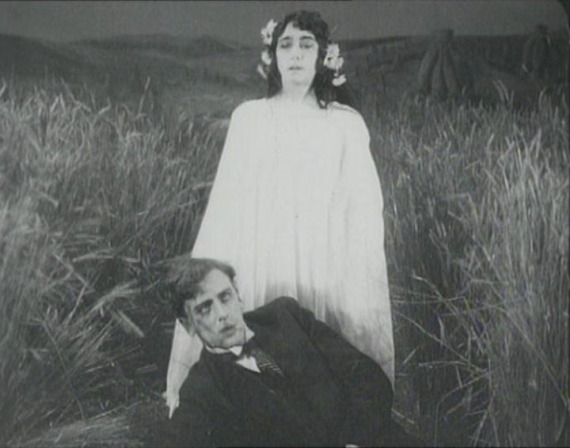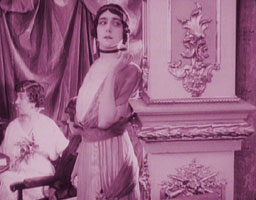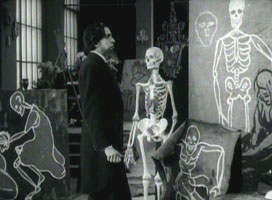The hidden meanings of Destined to be Happy exhibition - The Interview with Irina Korina
10 January 2017 | By
09 January 2017 | By
Inside the Picture: Installation Art in Three Acts - by Jane A. Sharp
19 November 2016 | By
Conversations with Andrei Monastyrski - by Sabine Hänsgen
17 November 2016 | By
Thinking Pictures | Introduction - by Jane A. Sharp
15 November 2016 | By
31 October 2016 | By
Tatlin and his objects - by James McLean
02 August 2016 | By
Housing, interior design and the Soviet woman during the Khrushchev era - by Jemimah Hudson
02 August 2016 | By
Dressing the Soviet Woman Part 3: "Are Russians Women?" Vogue on Soviet Vanity - by Waleria Dorogova
18 May 2016 | By
Dressing the Soviet Woman Part 1 - by Waleria Dorogova
13 May 2016 | By
Eisenstein's Circle: Interview With Artist Alisa Oleva
31 March 2016 | By
Mescherin and his Elektronik Orchestra - by James McLean
13 January 2016 | By
SSEES Centenary Film Festival Opening Night - A review by Georgina Saunders
27 October 2015 | By
Nijinsky's Jeux by Olivia Bašić
28 July 2015 | By
Learning the theremin by Ortino
06 July 2015 | By
Impressions of Post- Soviet Warsaw by Harriet Halsey
05 May 2015 | By
Facing the Monument: Facing the Future
11 March 2015 | By Bazarov
'Bolt' and the problem of Soviet ballet, 1931
16 February 2015 | By Ivan Sollertinsky
Some Thoughts on the Ballets Russes Abroad
16 December 2014 | By Isabel Stockholm
Last Orders for the Grand Duchy
11 December 2014 | By Bazarov
Rozanova and Malevich – Racing Towards Abstraction?
15 October 2014 | By Mollie Arbuthnot
Cold War Curios: Chasing Down Classics of Soviet Design
25 September 2014 | By
Walter Spies, Moscow 1895 – Indonesia 1942
13 August 2014 | By Bazarov
'Lenin is a Mushroom' and Other Spoofs from the Late Soviet Era
07 August 2014 | By Eugenia Ellanskaya
From Canvas to Fabric: Liubov Popova and Sonia Delaunay
29 July 2014 | By Alex Chiriac
My Communist Childhood: Growing up in Soviet Romania
21 July 2014 | By Alex Chiriac
Monumental Misconceptions: The Artist as Liberator of Forgotten Art
12 May 2014 | By Rachel Hajek
28 April 2014 | By Rachel Hajek
An Orgy Becomes a Brawl: Chagall's Illustrations for Gogol's Dead Souls
14 April 2014 | By Josephine Roulet
KINO/FILM | Stone Lithography Demonstration at the London Print Studio
08 April 2014 | By Alex Chiriac
24 March 2014 | By Renée-Claude Landry
Book review | A Mysterious Accord: 65 Maximiliana, or the Illegal Practice of Astronomy
19 March 2014 | By Rosie Rockel
Leading Ladies: Laura Knight and the Ballets Russes
10 March 2014 | By Bazarov
Exhibition Review | Cash flow: The Russian Pavilion at the 2013 Venice Biennale
03 March 2014 | By Rosie Rockel
24 February 2014 | By Ellie Pavey
Guest Blog | Pulsating Crystals
17 February 2014 | By Robert Chandler Chandler
Theatre Review | Portrait as Presence in Fortune’s Fool (1848) by Ivan Turgenev
10 February 2014 | By Bazarov
03 February 2014 | By Paul Rennie
Amazons in Australia – Unravelling Space and Place Down-Under
27 January 2014 | By Bazarov
Exhibition Review | Siberia and the East, fire and ice. A synthesis of the indigenous and the exotic
11 December 2013 | By Nina Lobanov-Rostovsky
Shostakovich: A Russian Composer?
05 December 2013 | By Bazarov
Marianne von Werefkin: Western Art – Russian Soul
05 November 2013 | By Bazarov
Chagall Self-portraits at the Musée Chagall, Nice/St Paul-de-Vence
28 September 2013 | By Bazarov
31 July 2013 | By Richard Barling
Exhibition review | Lissitsky — Kabakov: Utopia and Reality
25 April 2013 | By Richard Barling
Exhibition review | Ilya and Emilia Kabakov: The Happiest Man
18 April 2013 | By Richard Barling
27 October 2015 | By

Having known very little about Bauer’s films prior to attending this event, it certainly has opened my eyes to the beauty and nuances of early 20th century Russian Cinema. Dr Morley’s talk hi-lighted the important use of ‘Rembrandt style’ lighting (when there is only one source of light in the scene) and the overexposure used in dream sequences to create a more ghostly effect. Most interestingly, we learned that the black and white films that we see today would have been tinted with colour for their original screenings. We were able to see a replication of this tinting in ‘The Dying Swan’, although apparently there are no surviving originally tinted films. We also learned about the rise of Vera Karalli as an icon of stage and screen, and it was a delight to be able to watch her somewhat dramatic take on Pavlova’s famous dance.

Another subject that was discussed was the very Russian use of immobility in film. At points, the actors remain so static and still, yet still manage to convey complex emotion and character through the placement of limbs and facial expression. In this way, I would compare these two films to ballet. The viewer is not overwhelmed with dialogue, and has the charming experience of following the story just through the physical acting. In my opinion, films such as these transcend language, and can be enjoyed by anyone, regardless of nationality and tongue in the same way that the stories depicted in ballet can be understood without words.

Although I really enjoyed both films, I was surprised at how shocked I was at the ending of ‘The Dying Swan’. The sense of impending death and the feeling that there was no way of stopping the story made me hope for a fairytale ending, (which of course I was denied….) I came away very aware of the fact that everything comes to an end, and for all its overacting, stylised lighting and slightly unbelievable storyline, I felt that ‘The Dying Swan’ had truly captured something of the human experience- the inability to control your own destiny, no matter how obvious it may seem to outside viewers.

Overall, I had a great night and came away feeling informed, moved and excited for the next instalment of what looks to be an amazing film festival.


